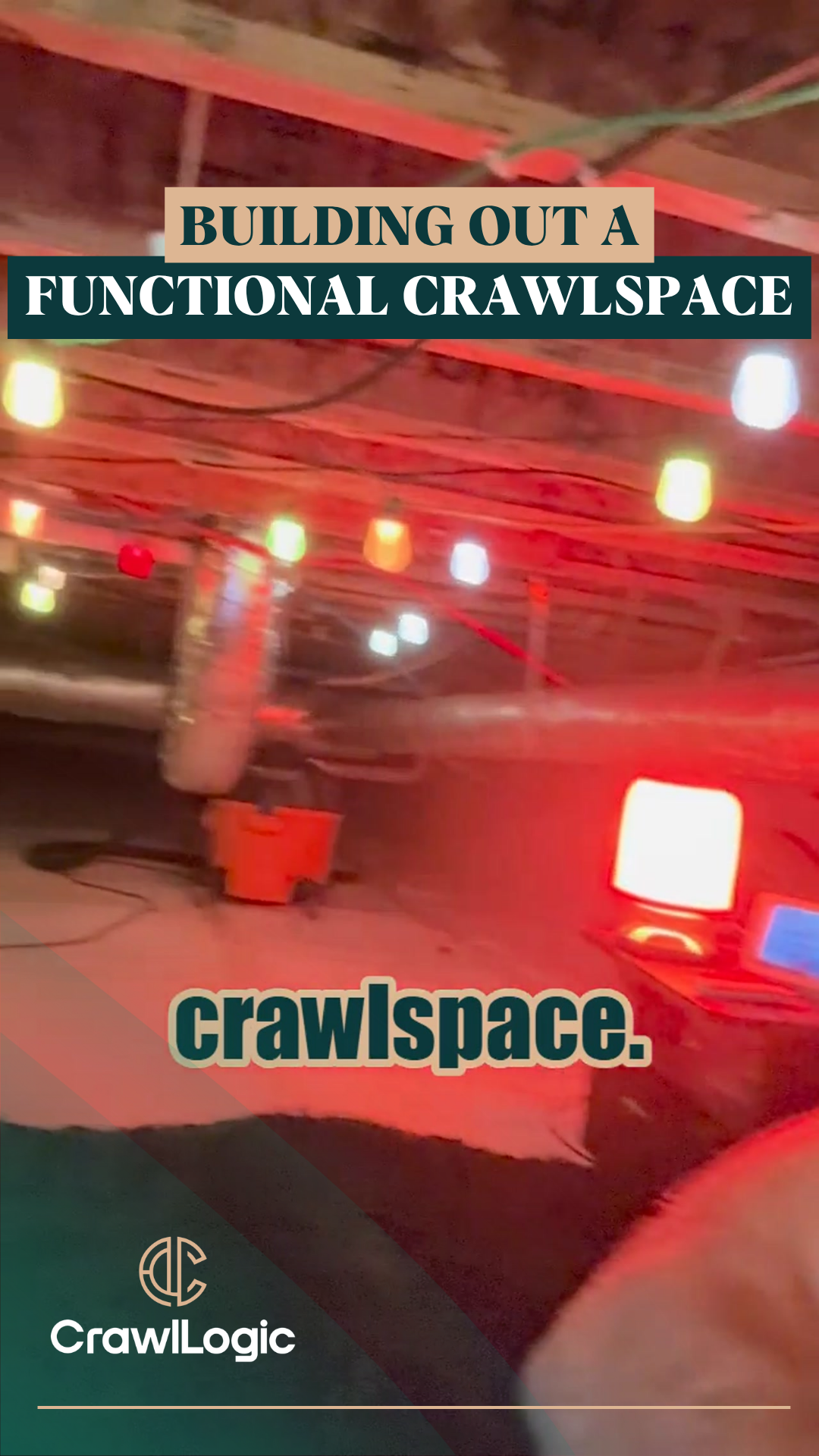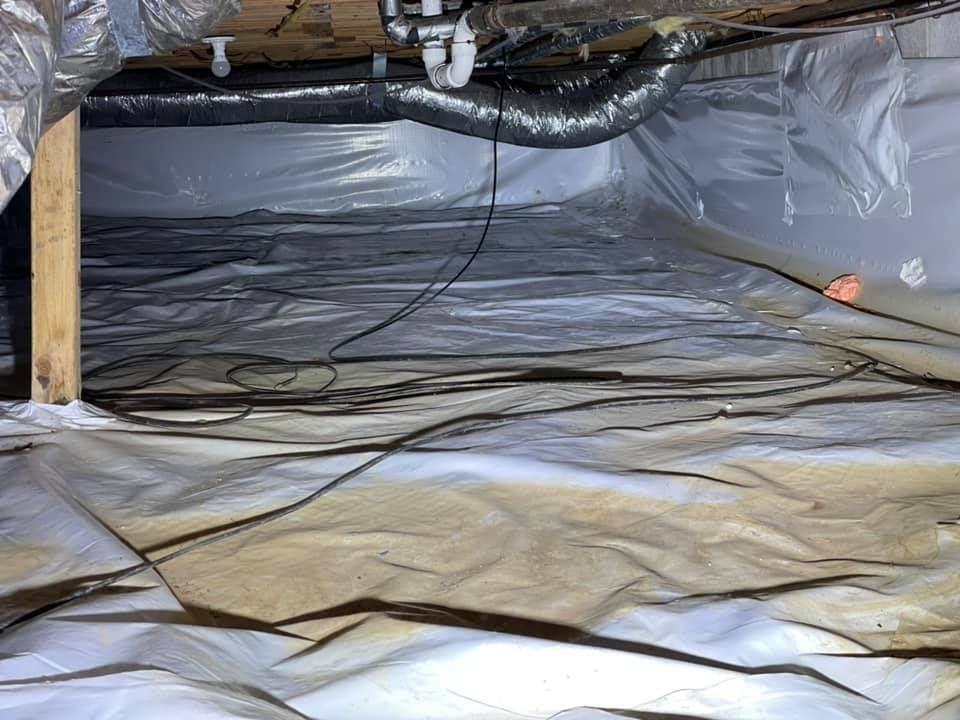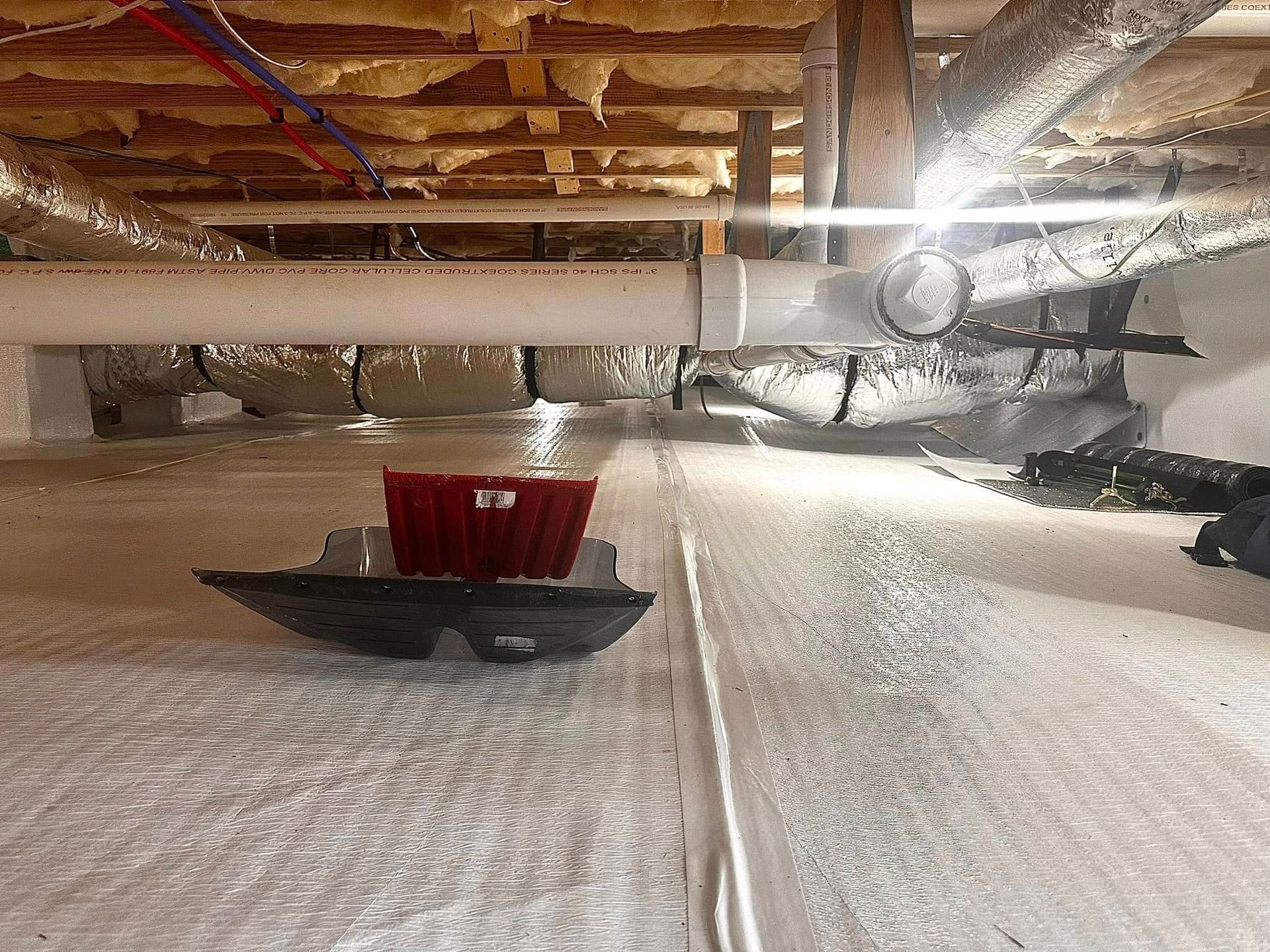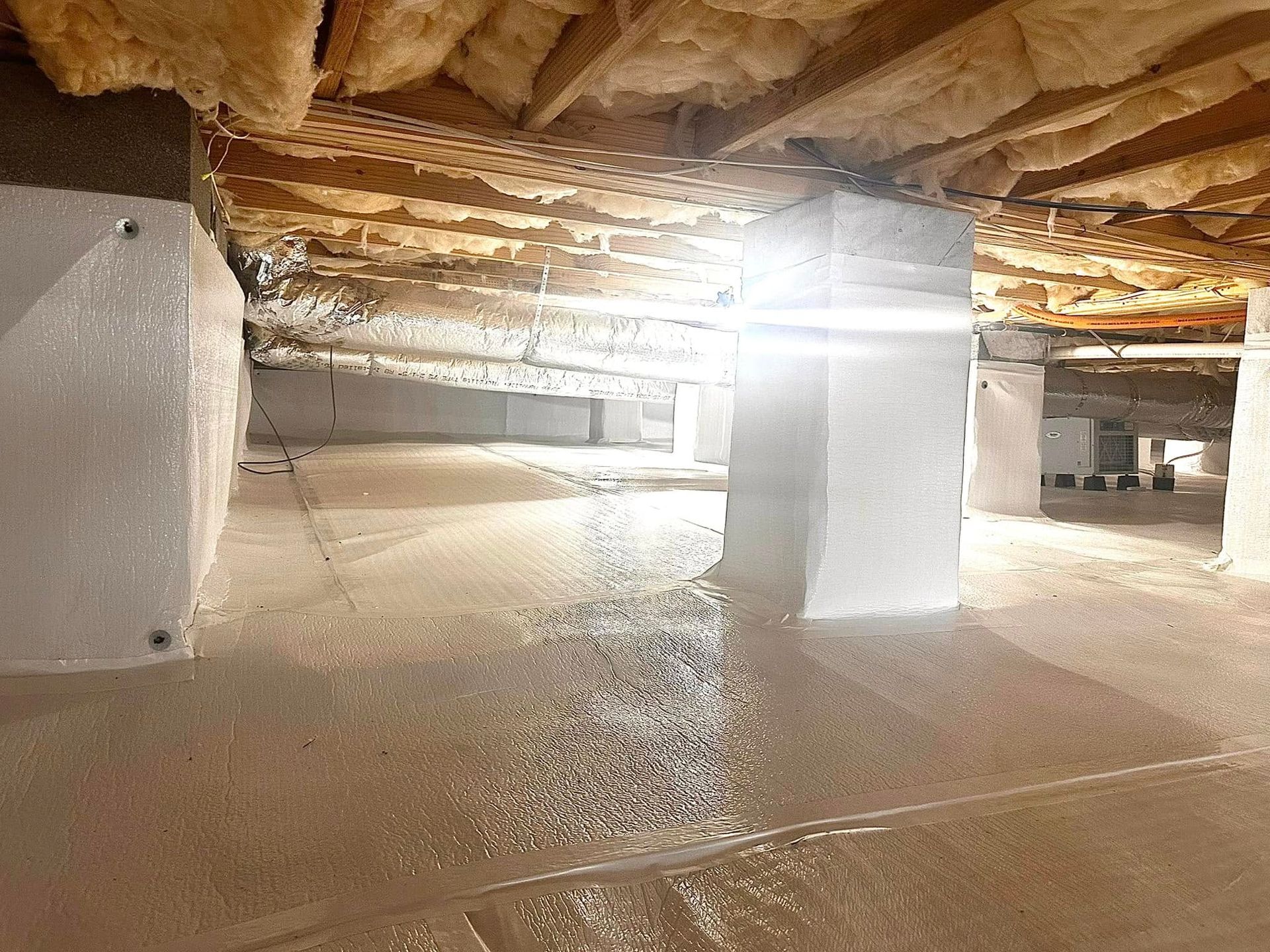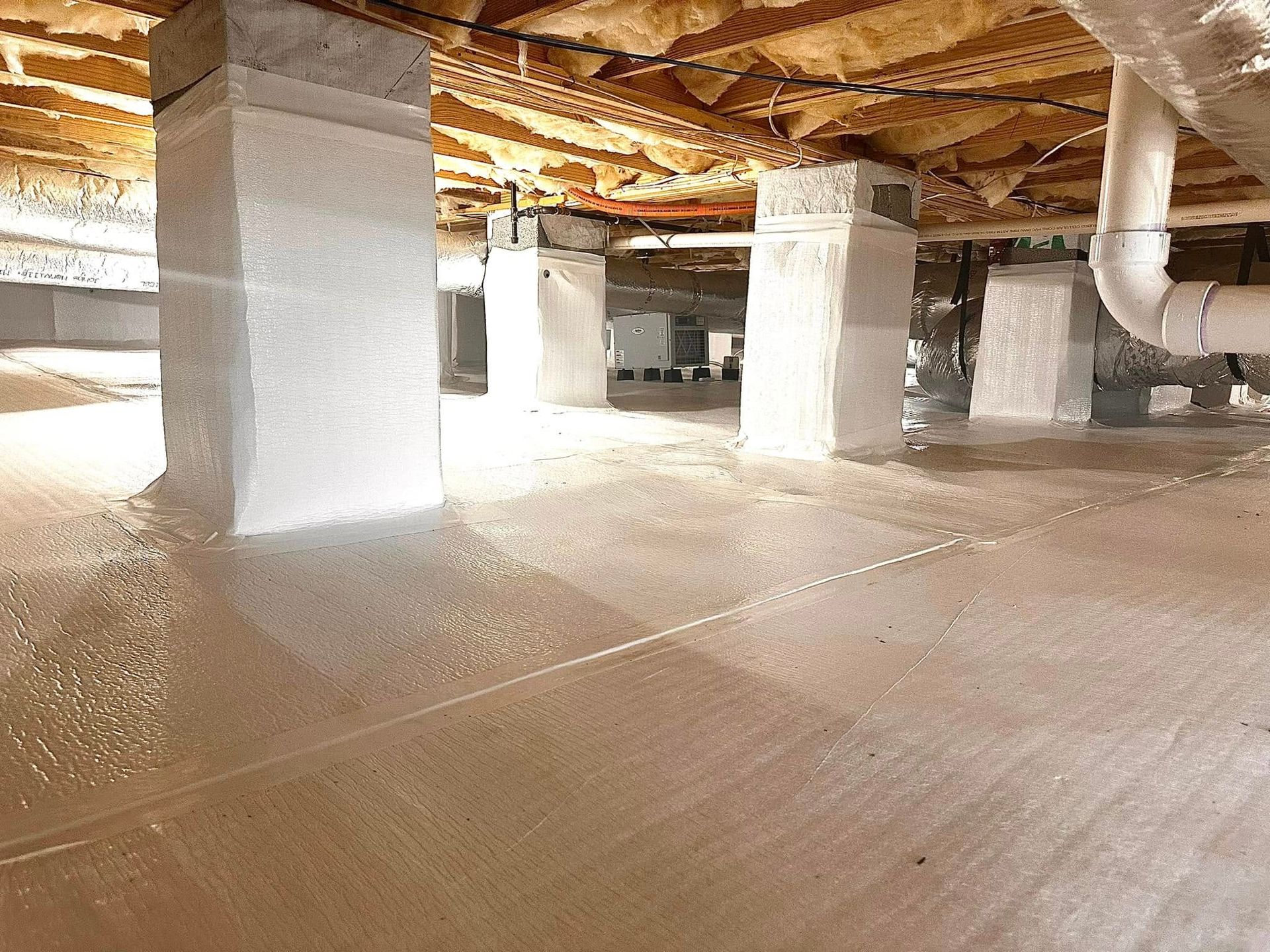How I Use My Encapsulated Crawl Space: Clean, Dry Storage Ideas
Introduction
Using the Space Under My Home
SIMPLE STEPS TO MAKE IT CLEAN, DRY AND USEFUL
I tell customers all the time that a good encapsulation should give you usable space. I practice what I preach.
I’m filming this in my own crawl space.
We keep our Christmas bins down here, general storage, and I’m building a small work corner.
It’s not a bedroom or a playroom. It’s clean, dry storage that’s easy to get to.
This post is a plain guide to how I set mine up and what I’ve learned.
If you keep it dry, sealed, and well lit, a crawl space can take a lot of the pressure off your garage and closets.
What Makes a Crawl Space Usable
Before you roll in the bins, the basics have to be right. The space needs to be dry. That means a sealed vapor barrier with tight seams and a dehumidifier holding the air around 45 to 55 percent humidity. I keep a small humidity reader in the house so I can check the numbers without crawling under the home.
It also needs to be clean. No loose insulation, scraps, or nails left behind. The liner should be flat and tight so you can move around without tripping.
Good lighting matters more than most people think. Bright, even lights let you see what you’re doing and make inspections simple. I keep the switch by the door so I can light the whole area when I go in.
Access is important too. A solid, well-sealed door keeps the space stable and makes it easy to get in and out. I keep a clear walkway from the entrance to the back so I’m not climbing over bins.
Finally, think about safety and monitoring. Leave room around HVAC, plumbing, and any sump pumps so they can be serviced. Make sure cords and drain lines are out of the path. With those pieces in place, you end up with a clean, dry crawl space you’ll actually use—and it’s easy to maintain over time.
A Tour of My Setup
In my own crawl space, I keep it simple. I split the area into a few zones so it doesn’t turn into a pile of random stuff. One section holds our Christmas bins and other seasonal items. Another section is general storage for things we don’t need every week. I’m also building a small corner where I can sit, sort tools, and do light work. We moved into this house in January of 2025, and we had some construction, so things got shuffled around. It’s still a work in progress, but the plan is clear and it already works well for our family.
The floor is comfortable to walk and kneel on. I laid carpet tiles in the main walkway and in the work corner. They sit on top of the liner and lift up easily if I need to clean or move them. I use metal wire racks for shelving so the bins sit off the floor and air can move around them. The lighting is bright and even, so I can see the labels on every bin without a flashlight. That alone makes a big difference.
Simple Storage Rules That Work
A crawl space stays useful when it stays organized. I use sealed plastic bins so dust and moisture don’t get to our things. I label the front and the lid so I can read it from the aisle. I keep a clear path from the door to the back so I can move in and out without climbing over anything. Heavy items sit close to the entrance or next to solid supports, and lighter items go farther back. I also make sure I can reach any valves, cleanouts, or the dehumidifier without moving half the room. When I finish a project, everything goes back to its spot. That habit keeps the space neat with very little effort.
What Not to Store (and Why)
There are a few things I won’t keep down here. I don’t store gasoline, paint thinner, propane, or other chemicals in the crawl space. The fumes are not safe and the fire risk isn’t worth it. I avoid cardboard because it pulls in moisture and can attract pests. If we need to keep fabric, papers, or keepsakes, they go into tight plastic bins with lids. I never store food or pet food in the crawl space. If humidity ever spikes, you don’t want items that can mold or spoil. Following these limits keeps the space clean, safe, and easy to manage.
Quick Upkeep Plan
A usable crawl space stays that way with a simple routine. I glance at the humidity reader once or twice a week. If it holds between 45 and 55 percent, we’re good. If it drifts higher and stays there, I check the dehumidifier and the drain line. Once a month I take a short walk through the space. I look for new drips, wet spots, or smells that don’t belong. Every few months I clean the dehumidifier filter and make sure the hose is clear. Once a year I do a full photo or video pass from the door to the back. If the liner gets scuffed, I re-tape it so it stays sealed. This whole routine takes a few minutes, and it keeps small issues from turning into big ones.
Easy Add-Ons That Make It Better
A few upgrades make the space easier to use. Extra lighting is first on my list. Bright, even light makes storage simple and keeps the crew honest on workmanship. We also add outlets and switches in the right spots, but an electrician should handle that work. I like carpet tiles in the walkway and under the work corner because they lift off the liner for cleaning. Wire or metal racks keep bins off the floor and allow air to move. A small water sensor near low spots or the sump is cheap insurance. And I keep a humidity display inside the house so I can check the numbers without crawling in.
Safety and Access Notes
Even when a crawl space is clean and bright, it’s still a utility area. I keep space open around HVAC, plumbing, electrical panels, and sump pumps so techs can work without moving half the room. I don’t screw racks into joists or push heavy items against structural members. Cords and hoses are routed out of walkways so nothing snags. Kids don’t play down here. It’s storage, not a living space. If you’re not sure about weight limits or layout, ask during your inspection and we’ll walk it with you.
Want a Crawl Space You’ll Actually Use?
This is what we build for our customers every week: clean, dry, well-lit crawl spaces that double as simple storage.
We handle the encapsulation, lighting, and monitoring, then show you how to lay out the space so it stays neat and easy to maintain. If you want the same setup I use at home, give us a call or text.
You’ll reach me or my team directly, and we’ll walk you through the plan for your home.
